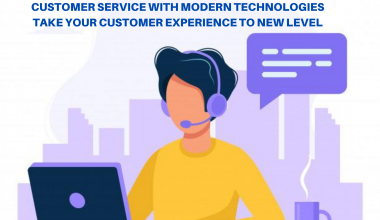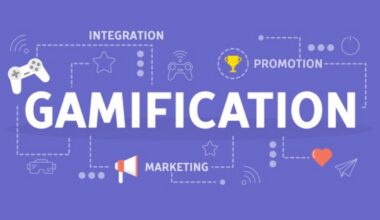
Today, businesses across the world are grappling with severe, melancholic effects of the COVID pandemic creating uncertainty in the global market. However, considering the present phenomenon as a new normal, business economies are hopeful to make a comeback, a gradual comeback, with a new set of visions to revive, to thrive. Let’s accept the fact – It’s not easy! The business world is getting tougher with each day as there are new entrants, new technologies, and new competitions at the global platter. As Olivier François, Global President& Chief Marketing Officer(CMO), FCA group, speaks to FORBES, “We have to be careful, and with awareness about switching on the light we’ll have to find a way that’s sensible and original and will speak to people. There will be lots of nuances, lots of shades of gray.”He did emphasize the value of consumers’ feelings about this pandemic because they are wary to return to normal. A challenge indeed! Moreover, digital transformation has brought about a large –scale disruptions in the way people consume brands, shop, share, interact and the entire landscape is increasingly getting complex. The result is CMOs as Marketer are struggling hard to deliver a ‘connected experience’ throughout the communication channels. Let’s focus on the key challenges CMOs are facing around the world. We can discuss some of them because ALL is not possible within the limited scope of just one platform!
1. It’s now an ‘Experience-led’ business ecosystem
Are we not talking about the people who consume products? Yes, Consumers. They have changed their style of consuming products. Consumers are now getting ‘experience-centric’ rather than the ‘product’ itself. Experience is becoming more powerful, more valuable for consumers than the product. For marketers, it is now a big challenge ‘to know’, ‘to understand ‘ the customer. It’s about technology transparency, consistency in voice & context while delivering to the end-users, i.e. customers. How to predict their future-tastes? Today’s what’s their 5-star experiences could become a 1-star expectation in the future.
2. The Demand for a contextually relevant content
With the digital technologies invading consumer’s life in totality, consuming habits have taken a new turn leading to a big shift in their expectation mode. Consumers are living in the world of Virtual reality, Augmented Reality, they are seeing the world through integrated technologies via Smart TVs and mobile phones at home. Thus, with the emergence of newer technologies and channels- AR, VR, Gaming, IoT – Marketers need to rethink their strategies, because of the shift in consumers’ engagement and consuming pattern of content as a whole. They need to prioritize based on the evolving nature of given technologies and channels. It’s all about the convergence of content and context.
3. Technology proliferation making channel ubiquitous
Let’s understand it this way – Internet-of -things (IoT) and increasing device types like various models (with varied features) of Smart Phones, TV sets, electronic gadgets (mostly sensor-based), are creating a world for consumers with a lot of things on the plate that creates an agnostic effect on them. They are consuming the offerings without realizing how it’s all coming, who is the creator, etc. The challenge lies here! Marketers need to deliver content & experience, both, without disrupting their current flow. Delivering a consistent, continuous, personal, a compelling experience needs a strategy that guarantees seamless experience for consumers (via their mobile phones, smart TV, or car, or just anything).
4. Locating disconnected devices of consumer
As per a recent ADOBE digital index, a consumer averagely owns 7.2 electronic devices, however, uses only three of these devices on an everyday basis. Say, I own four laptops, four Smart Phones, two sets of Smart TV with integrated technology, all lying at my home 24*7 in working conditions. I want to visit your website. I can use any particular phone and do it. The very next time I might consume the same content on my Smart TV (anyone). As a Marketer, how’ll you locate which device I am mostly active on? If as an owner, consumer I don’t know which device I am going to use tomorrow, how come you know about it? This is where the challenge lies before you.
As per Adobe findings stated above, marketers are able to see a mere 1.2 of those 7.2devices owned by an average consumer, be it Smartphone, Desktop, Tablet, Smart TV. Hence, marketers need to find out a way to tackle this challenge.
5. Creating a unique identity, unique trust quotient
Brand identity, value for trust are the two grounds that can make or break a brand. Cut-throat competitions, numerous brands infiltrating the same market by unique strategies wooing customers. Which brand should customers trust, whose identity connects to them the most? Moreover, in the virtual world, everything matters upon a click of a button or an AI-based recognition system. Companies have to balance between convenience and privacy with consumers especially when everything is online – commerce, digital modes of the payment system, identification methods, etc. All of these factors amount to establishing a trust quotient with respective brands.
Thus, we see, in the era of digital technology, old marketing models and silos are not going to be effective because marketers need to connect with the customers at every touch point. The strategy should include to reduce, and not to widen, the gap between Haves and Have- Nots. Pandemic and beyond, a new era called ‘Intelligence wave’ is beginning that is bringing technology to the core but emphasizing on customer experience (CX) that will decide the fate of a business in the digital age. Willing to explore how we can ramp up your marketing efforts and drive success? Reach us today
Read Also – Top Mobile App Development Companies in India





